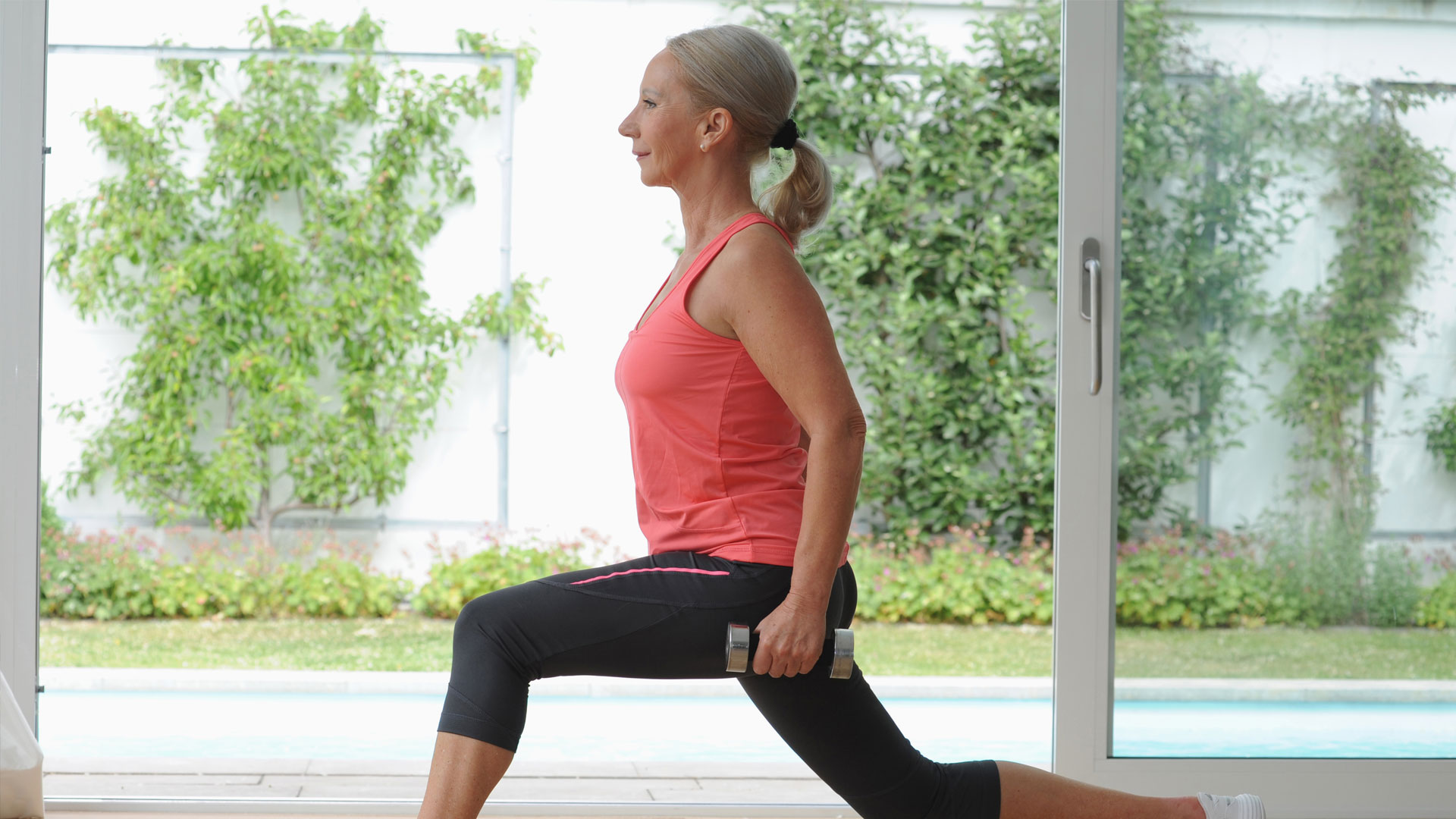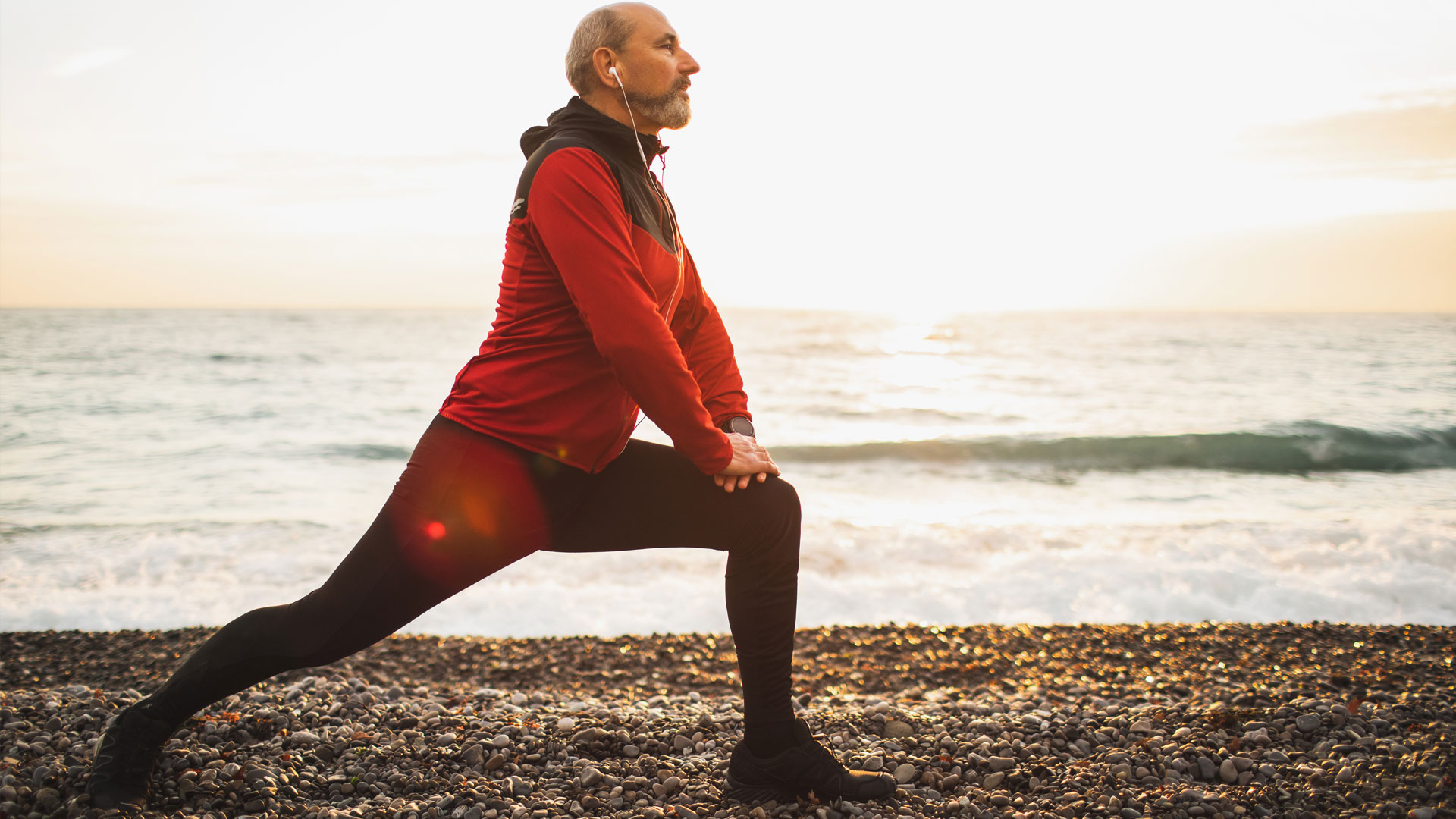What are the benefits of lunges?
We explore the benefits of lunges and the difference this familiar move could make to your workouts


It can be easy to overlook the benefits of lunges. However, whatever your goals, lunges are a great addition to your workout. They help to improve overall fitness and performance and are an effective way to build strength, particularly in the lower body and the core. Plus, they are ideal to incorporate into rehabilitation programs and, when performed properly, can even reduce the risk of further injury.
There’s no need to limit yourself to the classic forward lunge. There are many variations to help you challenge the muscles in different ways and keep your routine fresh. It’s a move that is accessible to beginners while also offering progressions to test the most advanced athletes.
So, whether you’re warming up to use the best treadmill or want some home workout ideas, lunges are an ideal choice.
What are lunges?
The forward lunge is familiar to many and involves stepping forward, lowering until the knee is at a right angle, and driving back to the starting position. But what is going on in the body? Your muscles have to work hard to control the movement and keep you balanced. Lunges have a downward (eccentric) movement when the muscles lengthen and an upward (concentric) movement when the muscles contract. According to 2018 research published in Sports Medicine, eccentric movement is beneficial for building muscle.
If you’re starting out, you can try a stationary lunge to perfect the form before moving on to progressions. Rich Cross, personal trainer and founder of Roc Fitness explained: “Practice makes perfect, so make sure that you aren't trying to run before you can walk (or lunge!)”

When it comes to variations, there are many to choose from. Cross commented that there are “reverse lunges which have the same principle as the standard lunge except we step backward, and side lunges which again are very similar but involve moving either left or right.” The reverse lunge is great for beginners as it doesn’t demand the same level of balance as a forward lunge. It’s also recommended for people recovering from injury as it minimizes strain on the joints.
Looking for a challenge? Once you’ve perfected the form, there are progressions for more advanced workouts. Jumping lunges are a great addition if your goal is to lose weight as they boost your heart rate and burn more calories. Once you’ve mastered the easier variations, adding weights can test your balance which in turn builds strength and activates your core. Compared to bodyweight lunges, adding weights increases muscle activation according to a 2020 review in the Journal of Sports Science and Medicine. Start small and only build up the weights once you’re confident in your form and can complete the repetitions with ease.
Start your week with achievable workout ideas, health tips and wellbeing advice in your inbox.
What are the benefits of lunges?
So what are the benefits of lunges? Cross said: "Lunges are a fantastic exercise for improving lower body strength, and practically everyone can perform them. Some people may struggle to perform other exercises such as a squat, which makes lunges a great choice." Lunges activate many of the biggest muscles in the lower body including the glutes, hamstrings, and calves while also targeting core strength according to a 2009 study in the Journal of Strength and Conditioning Research. They offer an efficient way of working these muscles and so can help improve fitness and performance as well as strengthening and sculpting the body.
The benefits of lunges carry over into your life outside the gym. According to the American Council on Exercise, lunges mimic functional movements such as climbing stairs, which means that they can help with the ease of these movements in everyday life. Many rehabilitation programs feature lunges and, when performed correctly, they can help strengthen muscles and reduce the risk of injury, according to a 2009 study in the Journal of Strength and Conditioning Research.
One of the benefits of lunges is that they are a unilateral exercise, meaning they work one side of the body significantly more than the other. Lunges help us spot and address any imbalances.
Cross explained that the benefits of lunges are far-reaching: "Whilst we often think of exercise as being beneficial to muscles, the advantages to our bones, ligaments, and tendons aren't often discussed. Strength exercises such as the lunge not only help develop lower body strength and muscle size, but they also improve bone density, alongside thickening and strengthening ligaments and tendons. This leads to greater overall joint health and availability of movement."
Form is key if you want to reap the full benefits of lunges and reduce the risk of injury. Experts suggest mastering the move with one of the easier variations such as the forward, reverse, or static lunge before progressing. According to Cross, common mistakes are "making the step too long or too short, and dropping through the lowering phase of the lunge. Find a stride length that feels natural and suits you. This may require a bit of experimentation, but once you have this you'll find your confidence in lunges will improve."
Thankfully, there are few dangers associated with the lunge and you can reduce the risk of injury by honing your technique. Cross recommended: "If you have any underlying injuries then it's best to start with body weight lunges and then slowly progress to weighted lunges. Make sure that the rear leg doesn't hit the floor hard. Aim to be an inch clear or to ‘kiss’ the floor with your knee."

How to use lunges in a workout
Lunges are a great addition to any workout. Rich suggests the following routine that showcases three variations on the lunge.
- Walking lunge - 10 per leg
- Plank - 30 seconds
- Lateral lunge - 8 per leg
- Push up - 6 repetitions
- Reverse lunge - 12 per leg
- Sit up - 10 repetitions
If your goal is weight-loss and you’re confident in your form, try adding weights to increase the challenge.
The many benefits of lunges mean they deserve a place in your workout. Nail the form to get the best results.

Louise Bond is a UK-based writer specializing in health and wellbeing. She has over eight years of experience in management within health and care and brings this passion and expertise to her writing. Louise has been published in The Guardian, Live Science, Fit & Well, Tom’s Guide, T3, Top Ten Reviews, Planet Mindful, Breathe, and Psychreg. She is happiest when she is out in nature, whether that’s on an invigorating hike or pottering in the garden.